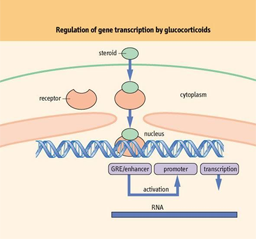摘要:

被子植物表皮细胞的形态学建成是目前研究工作中较为流行的生物学 现象,其大致包括:表皮细胞形状的改变、表皮细胞附属衍生物的形成、根毛和毛状体的分化等方面,根据大量的试验结果总结发现MIXTA及其同源基因的生物 学功能与该现象密切相关。
MIXTA是编码一个具有R2R3 MYB结构域的转录因子,自从1994年首次报道在金鱼草中被克隆以来,已经受到广泛的关注并在不同种属试验材料中被更深入地研究和讨论。
MIXTA 最早被证实的调节功能是促进金鱼草花瓣表皮细胞发生锥形化,使花瓣内表皮具有天鹅绒状质感,野生型金鱼草花瓣表面的锥形细胞在MIXTA突变时形状发生显 著扁平化,花瓣内表皮的天鹅绒状质感消失,异位表达的MIXTA同时调控锥形细胞和多细胞腺体毛状体在不同组织部位的生长。
近几年的研究发现,除金鱼草 外,许多物种中都存在一些类似于MIXTA的基因,统称为MIXTA-like,如唐松草、猴面花、番茄、拟南芥等,特别是在拟南芥中,发现了很多与 MIXTA具有高度相似性的基因,这些基因的功能与金鱼草中MIXTA的功能大同小异,并且对其下游基因的调节通路研究的较为透彻。
同时,MIXTA作为 MYB类转录因子可通过与bHLH转录因子及WD40转录因子结合发生互作,以复合物的形式间接地调控花青素的合成。
MIXTA的存在可以影响花瓣表面的 温度、气味、颜色、湿度、质感、光学特性等一系列生物学特征,并且通过改变植物花瓣的表型间接影响植物的授粉方式,建立自身的防御保护系统,由此体现 MIXTA的生物学功能广泛,对其进行研究的生物学意义可见一斑。
首先简要介绍了MIXTA的基本结构,利用氨基酸序列比对及系统发生树等生物信息 学技术比较分析MIXTA及其同源蛋白的亲源关系以及它们共同具有的R2R3 MYB结构域,然后从表皮细胞形状的改变(主要指表皮细胞锥形化)、表皮附属衍生物的形成(包括表皮蜡质的合成,毛状体和根毛细胞的分化)、参与激素代谢 途径进而间接调控表皮细胞形态建成3方面来论述MIXTA及其同源基因的具体生物学功能,最后对MIXTA在农业、观赏园艺的应用及未来的研究方向进行了 展望。
通过对MIXTA及其同源基因的研究,相信 MIXTA在农业、观赏园艺的应用及未来的研究也会有悦人的成绩,期待MIXTA能被运用到各个方面,来为解决各个方面的难题带来带来惊喜。
Abstract:
Nowadays, the morphology of epidermal cells in the angiospermaes is a universal biological phenomena, and it roughly includes the shape of the epidermal cells, the formation of epidermal cells attached derivatives, and the differentiation of trichomes and root-hair cells, etc.. Relying on large amounts of experimental results, people have found that the biological functions of MIXTA and its orthologous genes have these related phenomena. MIXTA encodes a MYB-like transcription factor with R2R3 domain. It got widespread attention since 1994 when MIXTA had been firstly reported in the Antirrhinum majus, and also got more in-depth studies and discussions in different species. It was found that MIXTA promoted the petals epidermal cells changed to be conical and made the petals inner epidermal cells have the velvet-like texture, on the contrary petals epidermal cells changed to flattening and the velvet-like texture in petals within epidemals disappeared when MIXTA gene had mutations in the wild type of Antirrhinum majus. Ectopic expression of MIXTA regulated the growth of the cone cells and multicellular glandular trichomes in different tissues. During the long-term study, some MIXTA homologous genes have been found in many other species except A. majus, collectively known as MIXTA-like, such as Thalictrum thalictroides, Erythranthe lewisii, Solanum lycopersicum, Arabidopsis thaliana, etc. especially in Arabidopsis thaliana. The functions of these genes in Arabidopsis thaliana were similar to MIXTA in Antirrhinum majus and research on their downstream genes regulating pathways were more clearly. At the same time, MIXTA, as a MYB-like transcription factor, however, could be through the interactions with bHLH transcription factors and WD40 transcription factor to indirectly control the synthesis of anthocyanin. MIXTA affects a series of biological characteristics, such as the surface temperature of the petals, smell, color, moisture, texture and optical properties. It also indirectly influenced plant pollination by changing the phenotypes of the plant petals and established their own defense systems. The biological functions of MIXTA are so extensive that studying it had an important biological significance. In this article, the basic structure of MIXTA gene was first briefly introduced, and using bioinformatics technology including the alignment of amino acid sequences and phylogenetic analysis to analyze the relationship between MIXTA and its orthologous proteins and R2R3 domain that they all had. After that, from three aspects including the shape of epidermal cells (turning to be conical), the formation of the affiliated derivatives on epidermis cells (including cuticular wax biosynthesis, trichomes and the differentiation of the root-hair cells), participating in hormone metabolic pathways to indirectly regulate the epidermal cells morphology to discuss the specific function of MIXTA and its homologous genes. Finally, the future of MIXTA application in agriculture, ornamental horticulture was discussed which will provide a reference for researchers in this field.
微信公众号
关注微信订阅号,实时查看信息,关注医学生物学动态。


